Back in January a buddy and I attempted a traverse of the El Camino del Diablo in less than ideal conditions. In the midst of a wet winter, we knew sections near the Pinacate Lava Flow and San Cristobol Wash would be difficult. We were stuck in mud of the worst sort for an hour east of Pinacate and San Cristobol proved completely impassable forcing a turn around. We back tracked to Wellton, our start point, and vowed to seek redemption another day. That story is here.
While researching a future trip to Canyonlands, I emailed Steph and Blake about one of their recent trips. I’ve been envious of how much they explore for some time now. In the exchange they mentioned wanting to try El Camino this month. Though we had never met, pretty quickly we had arranged another west to east run, including Bob,my friend from the last attempt and his wife Jill.
We rendezvoused in Fortuna Hills, gassed up and aired down, setting out with 3 Toyotos (4Runner, Tacoma, and FJ), 6 people and 1 German Wire Terrier named Addie and high spirits. This was a different entry point than the previous attempt and we knew less about the road conditions. Skirting the western edge of the Gila Mountains was fairly slow going with a lot of wash crossings but nothing too technical or rough. The crew stopped and explored Fortuna Mine, a huge operation in the day with shafts over 800 feet deep and boasting a 20 stamp mill, the largest I have heard of in the southwest.
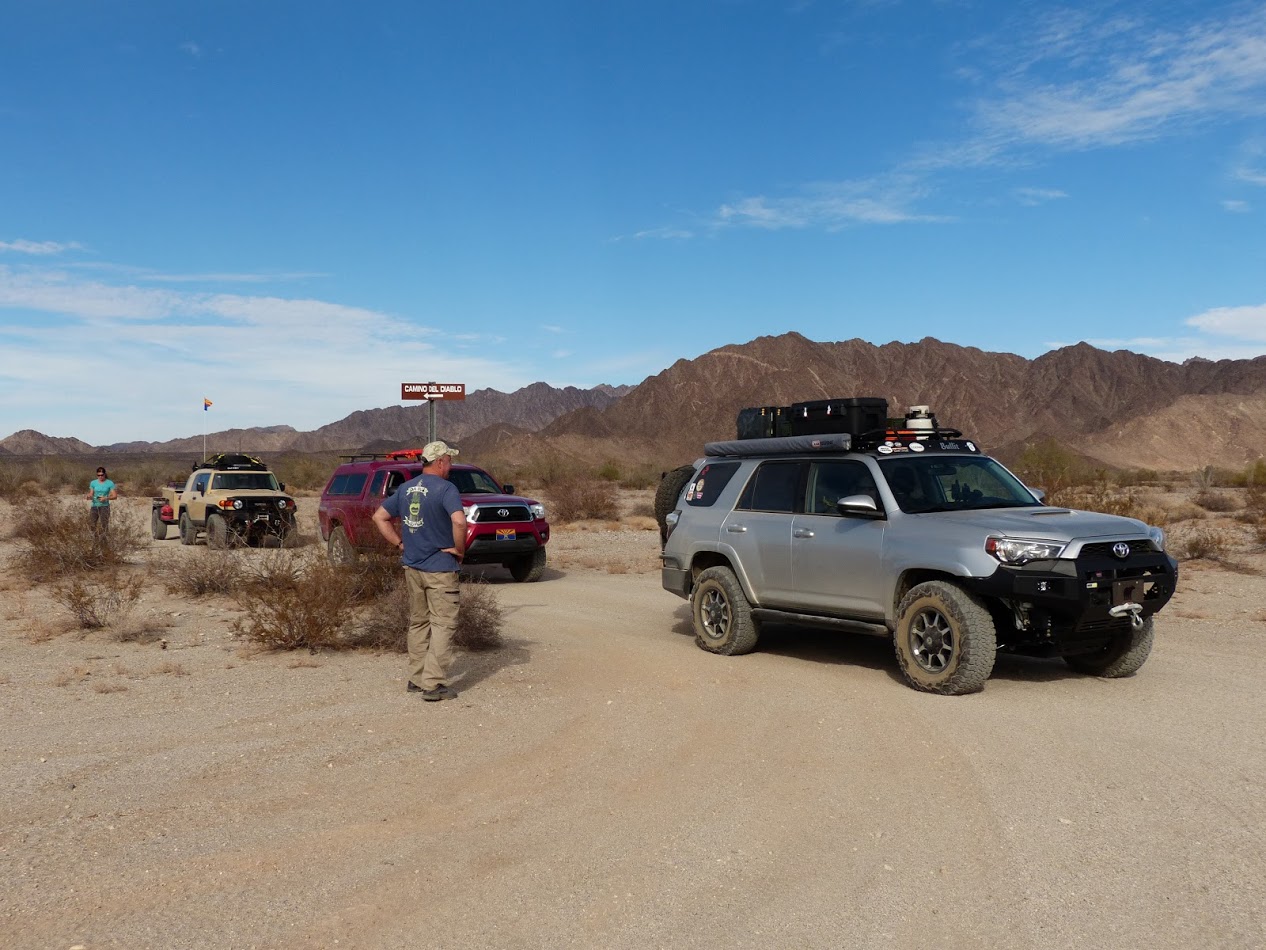
Our Convoy
The drive got easier and sandier as we worked south towards the Tinajas Altas Mountains. We made a few stops to admire the weathering of the granite that comprises the hills and mountains here and to check out the man-made features associated with the south to north flow of illegals. We cut east through the Tinajas Altas Pass and made camp in a little box canyon I’ve enjoyed a few times. With a bit of time before dinner, Jill and MJ did some rock scrambling along one of the walls of the canyon. Addie of course went along to show them the best way up. Ferguson, our portable potty, was a delight to the ladies. A pair of F-18s dogfighting just above us provided entertainment. The night passed uneventfully except for poor Addie who found some cholla.
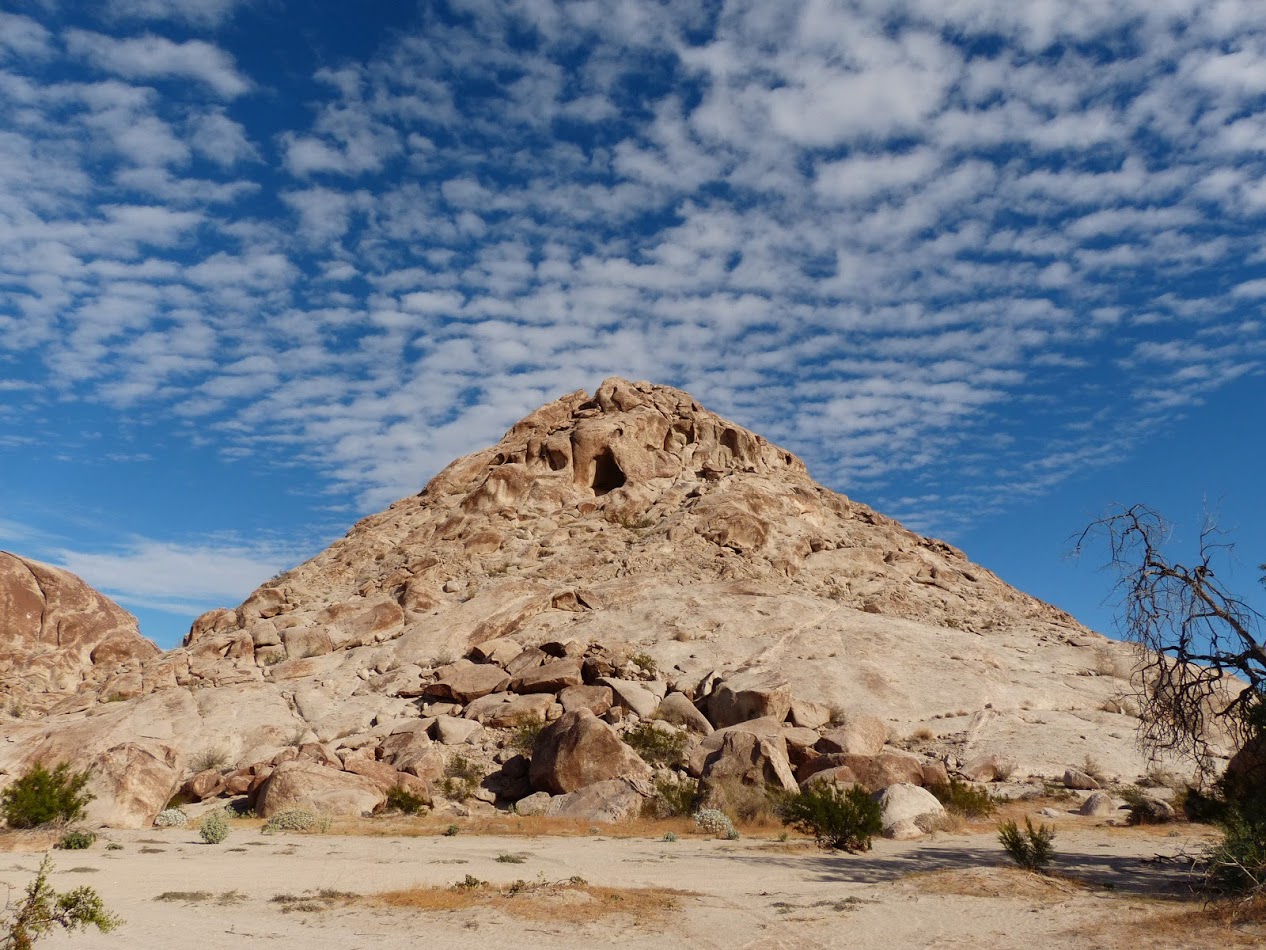

One of the "help me" towers
While MJ and I spent a lot of time breaking down our camp the next morning, Blake, Steph, Jill and Addie tried to summit the ridge east of camp. These rocks make a fun scramble.
We stopped by the high tanks that give the Tinajas Altas their name and were a vital water source for early travelers on El Camino. Today the mountain sheep and other wildlife still depend on them as a somewhat reliable water source. We spotted grind holes and petroglyphs, both modern and ancient, as we worked up the steep drainage that holds the granite tanks. There was still water in the lower two tanks. The views east were fantastic.
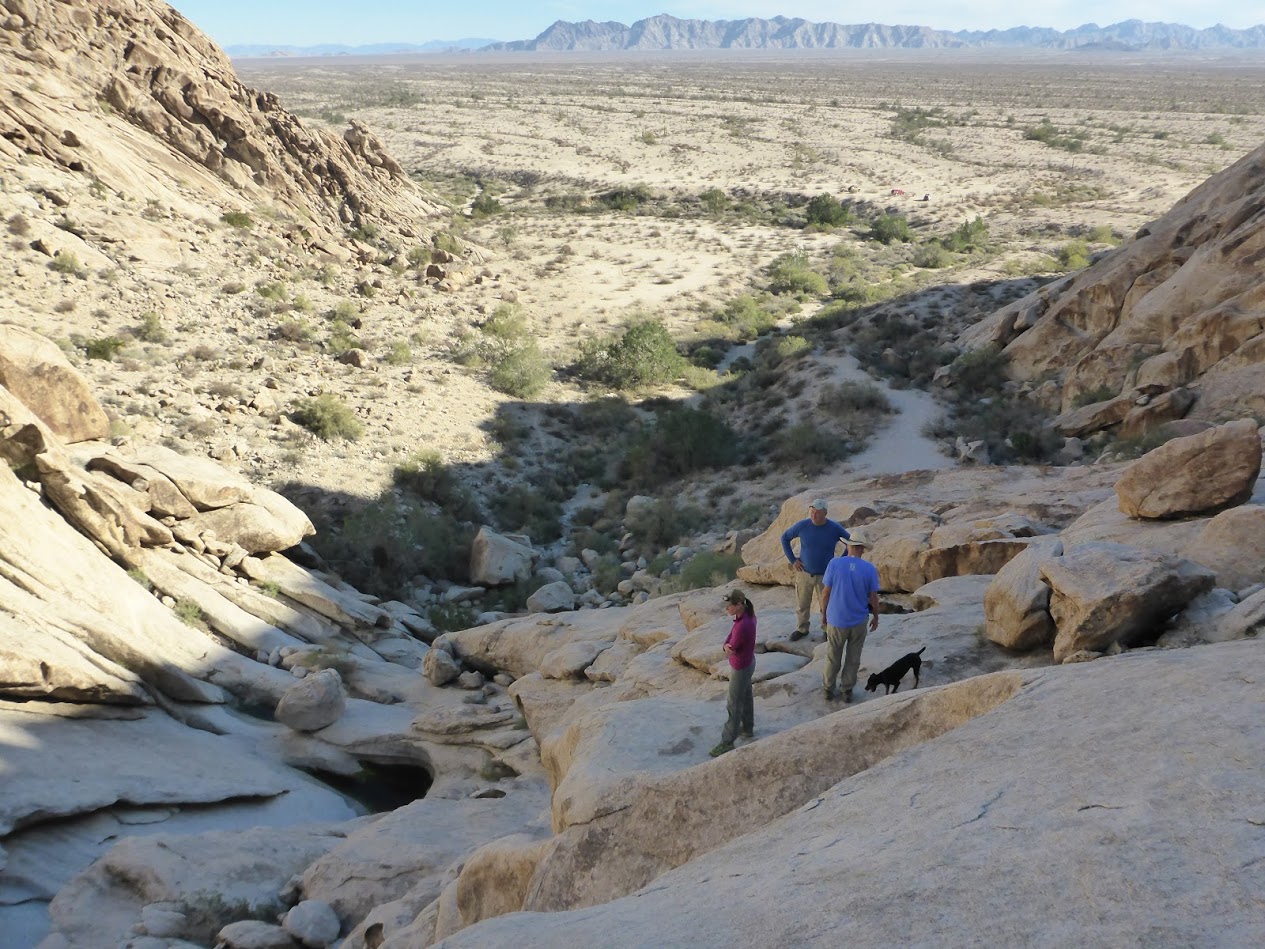
Tinajas Altas Tanks
We pushed out to the west border of the Cabeza Prieta where the Border Patrol had a high powered camera on a tower mounted on a truck. We waved when they panned down to check us out. The group made a quick stop at the Circle 8 gravesite, and then Tule Well for lunch. The Tule water spigot provided a nice little wash up for everyone.
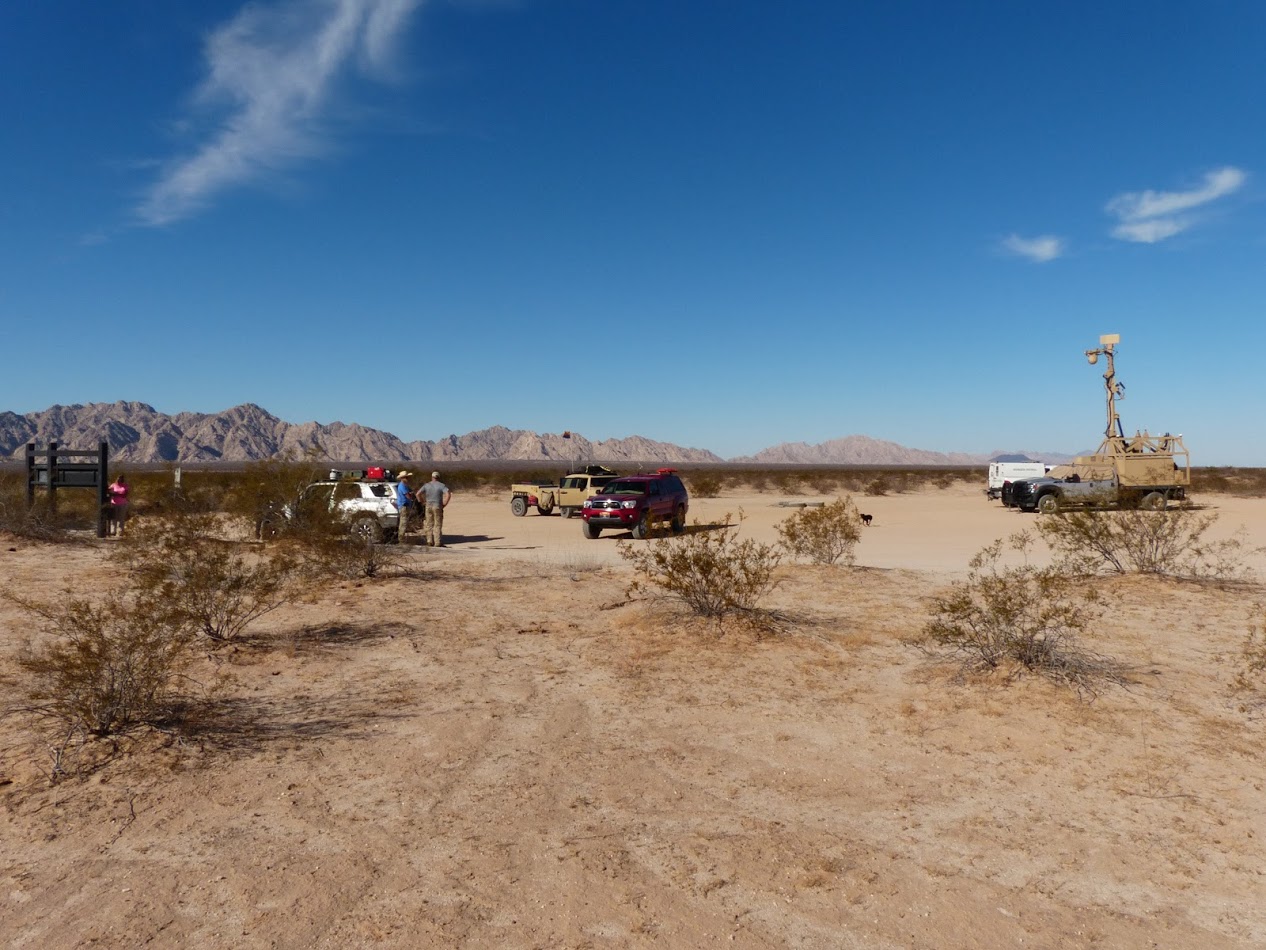
Border Patrol camera tower
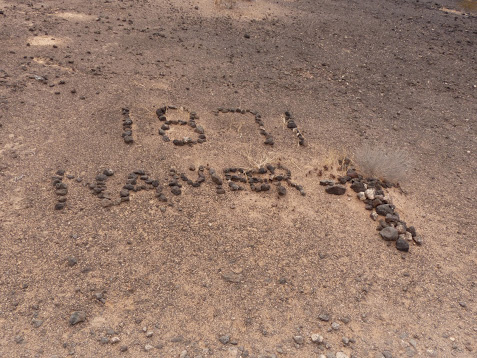
Nameer's Grave, 1871
While researching a future trip to Canyonlands, I emailed Steph and Blake about one of their recent trips. I’ve been envious of how much they explore for some time now. In the exchange they mentioned wanting to try El Camino this month. Though we had never met, pretty quickly we had arranged another west to east run, including Bob,my friend from the last attempt and his wife Jill.
We rendezvoused in Fortuna Hills, gassed up and aired down, setting out with 3 Toyotos (4Runner, Tacoma, and FJ), 6 people and 1 German Wire Terrier named Addie and high spirits. This was a different entry point than the previous attempt and we knew less about the road conditions. Skirting the western edge of the Gila Mountains was fairly slow going with a lot of wash crossings but nothing too technical or rough. The crew stopped and explored Fortuna Mine, a huge operation in the day with shafts over 800 feet deep and boasting a 20 stamp mill, the largest I have heard of in the southwest.
Our Convoy
The drive got easier and sandier as we worked south towards the Tinajas Altas Mountains. We made a few stops to admire the weathering of the granite that comprises the hills and mountains here and to check out the man-made features associated with the south to north flow of illegals. We cut east through the Tinajas Altas Pass and made camp in a little box canyon I’ve enjoyed a few times. With a bit of time before dinner, Jill and MJ did some rock scrambling along one of the walls of the canyon. Addie of course went along to show them the best way up. Ferguson, our portable potty, was a delight to the ladies. A pair of F-18s dogfighting just above us provided entertainment. The night passed uneventfully except for poor Addie who found some cholla.
One of the "help me" towers
While MJ and I spent a lot of time breaking down our camp the next morning, Blake, Steph, Jill and Addie tried to summit the ridge east of camp. These rocks make a fun scramble.
We stopped by the high tanks that give the Tinajas Altas their name and were a vital water source for early travelers on El Camino. Today the mountain sheep and other wildlife still depend on them as a somewhat reliable water source. We spotted grind holes and petroglyphs, both modern and ancient, as we worked up the steep drainage that holds the granite tanks. There was still water in the lower two tanks. The views east were fantastic.
Tinajas Altas Tanks
We pushed out to the west border of the Cabeza Prieta where the Border Patrol had a high powered camera on a tower mounted on a truck. We waved when they panned down to check us out. The group made a quick stop at the Circle 8 gravesite, and then Tule Well for lunch. The Tule water spigot provided a nice little wash up for everyone.
Border Patrol camera tower
Nameer's Grave, 1871
Last edited:


